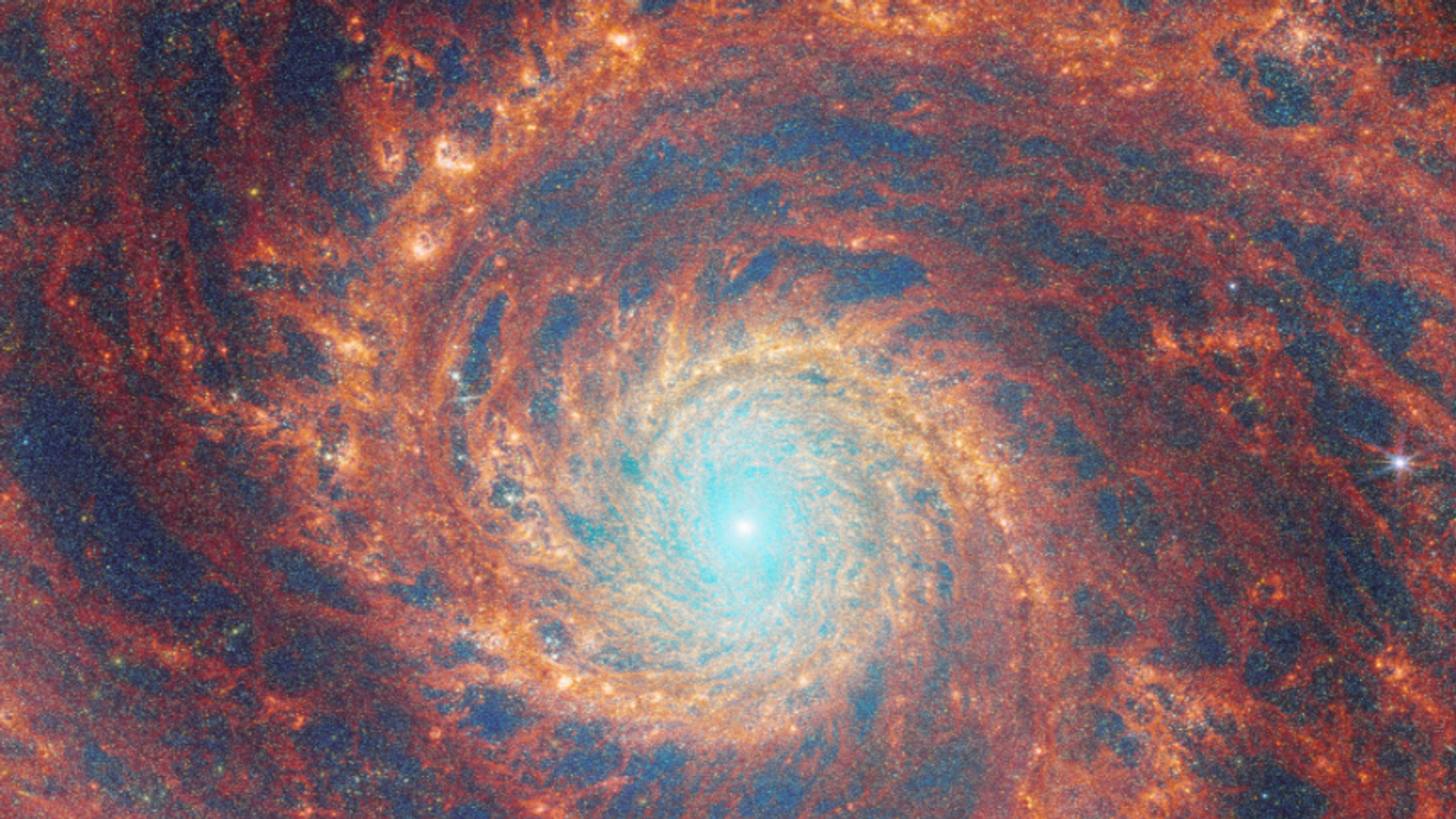A stunning new image of the distant whirlpool galaxy has been released via NASA’s James Webb Space Telescope.
Pictures of M51, to give it its proper name, have been shared by astronomers and photographers alike for decades, though never in quite such rich detail.
The galaxy is about 27 million light years away from Earth in the Canes Venatici constellation, and can sometimes be seen in our planet’s night sky.
It gets its whirlpool galaxy moniker thanks to the deep red and orange arm-like spirals around the edge of its bright white core, resembling water circling a drain.
In the new image, from the European Space Agency, the darker red parts show the galaxy’s warm, dustier regions; where complex molecules are forming on tiny particles of dust – giving off light.
The orange and yellow bits are where gas has been turned into ions, or charged particles, by newly formed stars.
The image is actually a combination of two separate pictures, one captured by the telescope’s main near-infrared camera and the other by its mid-infrared instrument, which provide different perspectives on their subject by decoding infrared light signals.
James Webb Space Telescope captures spectacular image of final chapters of star’s life
Dramatic new image from Webb Space Telescope reveals moment baby stars are born
NASA releases new images of Uranus which could unravel mystery about planet
We can’t see infrared light with our own eyes, so these sensors allow for colourised images of distant galaxies and stars to be released.
The telescope, launched on Christmas Day 2021, has previously been used to capture pictures of stars being born, stars dying, and Neptune’s mesmeric rings.
Read more science and tech news:
What to expect from Apple’s next event
How heartbreak impacts the brain and body
Inside the UK’s biggest phone recycling facility
Be the first to get Breaking News
Install the Sky News app for free
The sheer amount of things happening in M51 is thought to be partly driven by its proximity to its neighbouring dwarf galaxy NGC 5195.
Its gravitational influence is believed to be responsible for the nature of M51’s prominent spiralling arms.
The European Space Agency said it hoped the telescope’s observations could help shed light on how the energy poured out by stars into their surrounding environment contributes to the formation of new ones.
These so-called stellar nurseries exist in galaxies across the universe, not just our own Milky Way.
It’s part of a project called Feedback in Emerging extrAgalactic Star clusTers, or FEAST.








